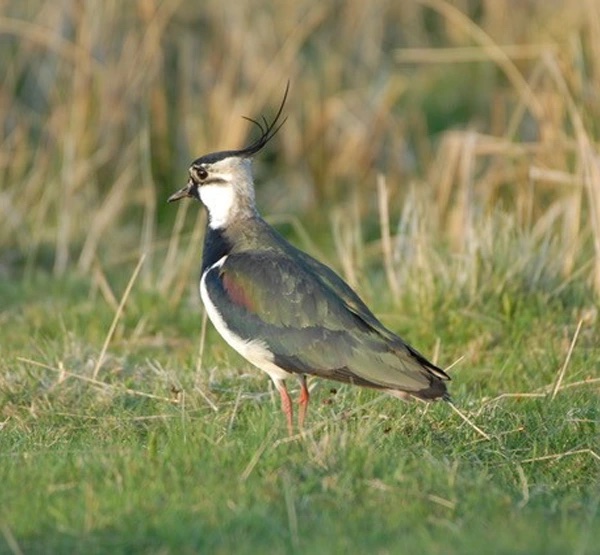Lapwing
- Home
- Why We Do It
- Conservation
- Lapwing
Key Facts
- Breeds in loose colonies and gathers in flocks for rest of year
- Grass-lined shallow nests on ground
- 3-4 eggs, 1 brood, March – June
| Scientific Name: | Vanellus vanellus |
| Number in Britain: | 96,500 breeding pairs |
| Conservation Status: | |
| in UK | Red |
| in Europe | Vulnerable |
| Globally | Near Threatened |

Other than our woodcock, some of which are our residents, the lapwing, along with the golden plover is our earliest arrival after winter turning up during the middle of March.
Sometimes called the green plover due to its iridescent green plumage which looks black from a distance, the bird lays four dark buff coloured quite pointed eggs heavily marked with black stripes and blotches in a scrape on the ground lined with dead grass from April onwards.
The chicks fend for themselves, feeding on insects and invertebrates from the day they hatch, but are reliant on their parents to brood them for some weeks until they fledge. Meadows and rough pasture is their chosen habitat and they prefer damp conditions for feeding.
The lapwing in common with many waders is faithful to where it was born and often come back to the same area where it was raised to breed the next generation. Lapwing will raise two broods if they are early enough with their first clutch.
